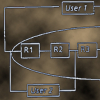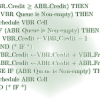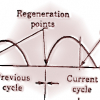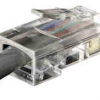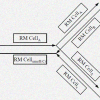102
click to vote
Presentation
The class lectures for this class are broadcast live on the internet. Video recordings of all classes are available on-line. The presrntation cover the following topics:
A Review...
106
click to vote
Publication
With increasingly widespread use of computer networks, and the use of varied technology for the interconnection of computers, congestion is a significant problem. In this report, w...
104
click to vote
Publication
The ERICA switch algorithm has been discussed extensively in TM group in the past. However, over the last two years, the algorithm has been substantially modified. This contributio...
111
click to vote
Publication
his report presents a survey of the traffic management issues in the design and implementation of satellite-ATM networks. First a reference satellite-ATM network architecture is pr...
Publication
During overload, most networks drop packets due to buffer unavailability. The resulting timeouts at the source provide an implicit mechanism to convey congestion signals from the n...
118
click to vote
Publication
Congestion avoidance mechanisms allow a network to operate in the optimal region of low delay and high throughput, thereby, preventing the network from becoming congested. This is ...
Publication
We propose a scheme for congestion avoidance in networks using a connectionless protocol at the network layer. The scheme uses a minimal amount of feedback from the network to the ...
109
click to vote
Publication
Popular myths that cheaper memory, high-speed links and high-speed processors will solve the problem of congestion in computer networks are shown to be false. A simple definition f...
108
click to vote
Publication
Weaknesses in several recently proposed ideas about congestion control and avoidance in high-speed netwroks are identified. Both sides of the debate concerning prior reservation of...
Publication
Congestion control mechanisms for ATM networks as selected by the ATM Forum traffic management group are described. Reasons behind these selections are explained. In particular, se...

